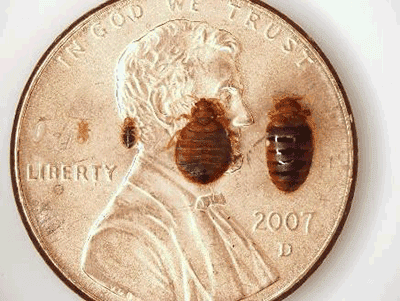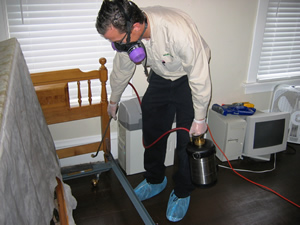How to Recognize Bed Bug Bites and Treat Them Quickly
How to Recognize Bed Bug Bites and Treat Them Quickly
Blog Article
Get Informed About the Kinds Of Bug Control Techniques and Their Advantages for Property Owners
Understanding the different insect control approaches offered to property owners is essential for effective bug administration. Property owners that are educated can make calculated choices that not only address parasite problems yet also boost the general top quality of their living atmosphere.
Chemical Parasite Control Methods
Chemical bug control techniques are a critical part of integrated parasite management techniques for homeowners looking for reliable remedies to pest invasions. These approaches include the application of chemical compounds developed to eliminate or prevent parasites that intimidate personal property, health, and comfort. Common chemicals used consist of insecticides, herbicides, rodenticides, and fungicides, each customized to target specific parasites.
The key benefit of chemical bug control is its quick efficiency; lots of solutions offer prompt results, minimizing pest populations dramatically in a short time. Furthermore, developments in chemical formulas have caused products that are more ecologically pleasant and have reduced poisoning levels for non-target microorganisms when used properly.

Organic Bug Control Strategies
Natural insect control approaches have acquired prestige as home owners seek much safer and much more sustainable choices to typical chemical strategies. Organic parasite control strategies make use of natural predators, parasites, or pathogens to take care of pest populaces properly. This approach is not only eco-friendly however additionally lessens the danger of injury to non-target types, consisting of useful bugs and wild animals.
Among the most usual biological control methods involves introducing natural predators into the environment. For instance, ladybugs can be used to regulate aphid populations, while nematodes target soil-dwelling insects like grubs. Furthermore, parasitoids-- organisms that live on or within a host-- can be used to control specific insect species by laying eggs inside them, ultimately resulting in their death.
One more technique is the usage of biopesticides, which are acquired from natural products such as microorganisms, plants, or minerals (bed bug exterminator). These products can efficiently target insects while presenting minimal risk to human beings and pet dogs. On the whole, organic pest control strategies give house owners with an effective ways of bug management that lines up with eco-friendly principles, promoting a healthier living setting while minimizing dependence on synthetic chemicals
Mechanical Bug Control Strategies
Mechanical bug control strategies include a range of approaches that literally protect against or get rid of insects without using chemicals. These techniques are especially useful for homeowners looking for environmentally pleasant options while making certain the security of their home.
One usual approach is making use of obstacles, such as catches, internet, and displays, which avoid insects from getting in homes or particular areas. As an example, setting up window screens can effectively maintain insects out, while using physical obstacles This Site around yards can hinder larger bugs like bunnies or deer. Additionally, mechanical traps made for rats can catch and remove these insects without the requirement for hazardous compounds.
One more efficient method involves making use of mops and vacuum cleaners to get rid of parasites directly from surface areas. Normal cleansing and maintenance can considerably minimize bug populaces by removing food resources and hiding spots. Additionally, using gadgets like ultrasonic bug repellents can discourage different parasites via audio waves that are unpleasant to them yet inaudible to people.
Cultural Parasite Control Practices
Cultural pest control methods concentrate on customizing the setting and monitoring methods to develop problems that are much less favorable to pest invasions. These practices are essential in keeping a balanced ecological community and lowering the dependence on chemical interventions. By altering agricultural practices, house owners can efficiently hinder insects while promoting plant wellness.
One common strategy consists of plant rotation, which disrupts the life cycles of parasites by transforming the kinds of plants grown in a specific location (bed bug exterminator). This not only reduces pest populaces but likewise improves soil health. Additionally, intercropping-- growing diverse plants in closeness-- can puzzle parasites and reduce their capacity to find their favored host plants
Water monitoring is another critical element of social techniques. Proper watering methods can prevent standing water, which functions as a breeding place for mosquitoes and other pests. In addition, maintaining tidiness in and around the home, such as on a regular basis getting rid of particles and food waste, can considerably decrease bug destination.
Integrating these social methods right into a comprehensive insect management technique allows home owners to produce a setting that normally prevents insects, thereby improving the effectiveness of various other control approaches while advertising lasting horticulture and landscaping.

Integrated Bug Management Approaches
Integrated Parasite Management (IPM) represents a holistic strategy that combines different methods to efficiently manage bug populaces while decreasing environmental impact. This method integrates organic, cultural, physical, and chemical methods to accomplish lasting parasite control. By assessing pest populations and their natural opponents, IPM stresses tracking and recognizing pests before applying control actions.
Among the core concepts of IPM is making use of thresholds, which establish the degree of bug activity that calls for treatment. This makes certain that therapies are used only when required, minimizing the dependence on chemical pesticides. Biological control methods, such as introducing all-natural helpful resources predators or parasites, work in combination with social methods like plant turning and environment control to disrupt pest life process.
Moreover, IPM urges making use of least-toxic chemical options when treatment is essential, focusing on items that pose minimal threat to non-target organisms and the atmosphere. For house owners, adopting IPM comes close to not only improves the efficacy of insect management but likewise promotes a much healthier living environment, fostering biodiversity and decreasing chemical direct exposure. Eventually, IPM equips house Recommended Reading owners to make enlightened decisions that balance bug control with environmental responsibility.
Conclusion
Finally, understanding the numerous insect control methods encourages home owners to make enlightened decisions relating to pest monitoring. Each strategy-- chemical, biological, mechanical, cultural, and incorporated pest administration-- offers unique benefits that accommodate various demands and choices. By picking ideal approaches, house owners can properly handle bug populations while lessening health threats and ecological influences. This educated technique adds to a healthier living environment, advertising general well-being for family members and pets alike.
Recognizing the numerous insect control methods offered to home owners is necessary for effective bug administration.Chemical insect control techniques are an important component of integrated insect monitoring methods for home owners seeking reliable solutions to pest problems. In general, biological bug control techniques offer homeowners with a reliable means of bug monitoring that lines up with environmental concepts, advertising a healthier living atmosphere while reducing reliance on artificial chemicals.
Social bug control practices concentrate on modifying the atmosphere and administration strategies to develop conditions that are less favorable to pest problems.In verdict, understanding the numerous insect control approaches encourages property owners to make informed choices relating to pest management.
Report this page